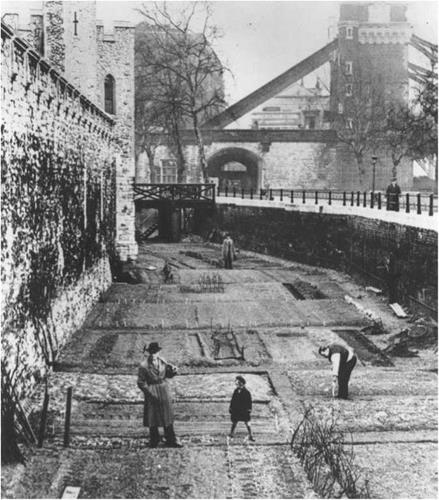But it was not the ideas of architects that had the most dramatic effect on urban agriculture in Britain and Europe between 1900 and 1945 – the biggest stimulant to urban food production in Europe was undoubtedly war.
In both World Wars, the real threat of starvation posed by blockades prompted campaigns to increase indigenous food output, much of it from urban agriculture. In the First World War, serious UK government campaigning to boost food production did not start until 1917 for fear, as with rationing, of damaging civilian morale. Despite this, campaign results were dramatic. The number of allotments, each typically 250 m2 in area, roughly tripled from between 450 000 to 600 000 in 1913 to between 1 300 000 and 1 500 000 by late 1917, which together produced 2 000 000 tons of vegetables (Crouch and Ward, 1988).
Between the wars, interest in allotments and other forms of urban food growing declined throughout Europe, although it never fell back to pre-1914 levels. Mass unemployment from the late 1920s onwards sparked a revival in allotment interest as a valuable means of self-help. Philanthropic groups of various kinds, in Britain notably the Society of Friends, ran schemes providing fertiliser, seeds and tools. Currently, similar support mechanisms have been introduced in Cuba, to support its national programme of urban agriculture (see Chapter 17).
At the outbreak of the Second World War, the UK government was determined not to repeat the mistake of the previous conflict in leaving preparations for boosting home food production too late. Accordingly, the famous ‘Dig for Victory’ campaign was launched by the Minister of Agriculture in October 1939. As in 1917-18, the results of the campaign were impressive. By the middle of the war, a survey showed over half of all manual workers were producing food from either an allotment plot or garden, and by the war’s end there were approximately 1 500 000 allotments. In 1944 these, together with gardens and other plots of land, including parks turned into fields, were meeting fully ten per cent of national food needs and around half the nation’s fruit and vegetable requirements (Crouch and Ward, 1988). In addition to fruit and vegetables, livestock clubs also sprang up in abundance.
|
Figure 13.4 |
|
Figure 13.5 |





